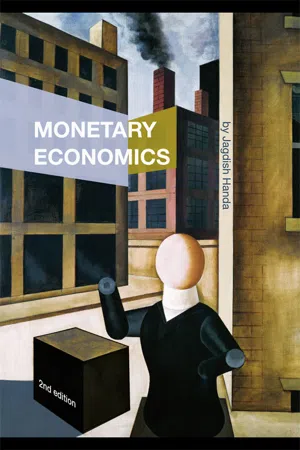Economics
Time-inconsistency Problem
The time-inconsistency problem refers to a situation where a decision maker's preferences change over time, leading to inconsistent choices. In economics, this can create challenges for policymakers when trying to implement long-term policies, as individuals may change their behavior in response to short-term incentives. This can lead to suboptimal outcomes and inefficiencies in the economy.
Written by Perlego with AI-assistance
Related key terms
2 Key excerpts on "Time-inconsistency Problem"
- eBook - ePub
Macroeconomic Theory
A Dynamic General Equilibrium Approach - Second Edition
- Michael Wickens(Author)
- 2012(Publication Date)
- Princeton University Press(Publisher)
6
Fiscal Policy: Further Issues
6.1 Introduction
In this chapter we consider two further issues in fiscal policy: time inconsistency and pensions policy. Governments sometimes announce a policy for the future but find it optimal to carry out a different policy when the future arrives, perhaps because the conditions are different from those that were expected to prevail. This change of mind is called the problem of time inconsistency. A policy that it is not optimal to change in the future is called time consistent. The mathematical appendix includes a discussion of the general problem of time inconsistency. In this chapter the general theory is used to examine the circumstances under which time-consistent and time-inconsistent fiscal policies are optimal.Many problems in macroeconomics involve a period of time so long that conventional dynamic analysis is no longer appropriate. An example is where the time period is that of a generation, as opposed to the calendar time that is conventionally used, such as a month or a year. A decision taken by one generation may affect subsequent generations, but those later generations would have had no say in the decision. Many fiscal decisions are of this type: for example, unfunded pensions and some public investments. In order to analyze these issues we may need to use the overlapping-generations model. In this chapter, we discuss the overlapping-generations model and then we illustrate its use by analyzing the issue of pensions. We examine the relative merits of funded and unfunded pension schemes. - eBook - ePub
- Jagdish Handa(Author)
- 2008(Publication Date)
- Routledge(Publisher)
Finally, the chapter investigates the superiority of prior commitment to future objectives and policies, and credibility of the central bank.This chapter also shows the superiority of intertemporal optimization policies to myopic ones, which can have an inflationary bias. Intertemporal optimization over time provides two types of policy approaches. One of these is the time-consistent one in which the policy path for the current and future periods is derived only once and followed for all future periods. The second approach allows reoptimization every period with an unchanging objective function.Key concepts introduced in this chapter- ♦ Preferences over goals
- ♦ Economy’s constraints on the tradeoff among goals
- ♦ Conflicts among policy makers
- ♦ Central bank independence
- ♦ Myopic optimization
- ♦ Time consistency of policies
- ♦ Reoptimization with an unchanging objective function
- ♦ Credibility of policy and commitment
This chapter focuses on several issues important to the formulation of monetary policy by the central bank. Among these are the choice among goals and the possibility of conflicts between the monetary and fiscal authorities in the attainment of their desired targets and goals. In cases of such conflicts, the ability of the central bank to pursue its own choices becomes important and is discussed under the heading of the independence of the central bank.The other two major issues addressed in this chapter are those of the time consistency and credibility of policies. The time consistency of monetary policies deals with the question of whether the central bank should determine its policies for the future periods within its horizon and stick to them, or should retain discretion to reformulate its policies as time passes. Discretionary policies can be arbitrary ones, be derived from one-period (“myopic”) optimization or be based on continual intertemporal reoptimization as each period passes. Related to the issue of time consistency of policy is the important one of maintaining the credibility of the central bank among the public and the consequences of a failure to maintain credibility.
Learn about this page
Index pages curate the most relevant extracts from our library of academic textbooks. They’ve been created using an in-house natural language model (NLM), each adding context and meaning to key research topics.

